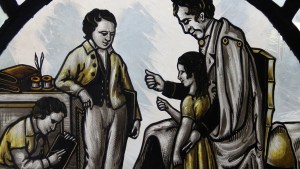Pope Francis’ Angelus and General Audience broadcasts are now available in sign language. The new YouTube channels were launched Easter Sunday, following the pope’s guidance on the Vatican’s new “No One Excluded” project. The channels are meant to increase accessibility for disabled communities.
The Vatican released two channels on Sunday, one in American Sign Language (ASL) and another in Italian Sign Language (LIS). The announcement, on Vatican News, noted that the project is “experimental in nature.” Vatican officials intend to give the project a trial period of one year.
A forthcoming mobile app is planned to work in tandem with the YouTube channels. Expected to come by summertime, the app will modify Vatican media content to an accessible format for the sensory disabled. Along with the sign language content, the app will cater to those with visual and communication disabilities. The Vatican has stated that the app will be free to use.
According to Angelus News, the two channels were in development for more than a year. Translations are coordinated by Sister Veronica Donatello, head of the Italian bishops’ National Service for the Pastoral Care of People with Disabilities. Donatello said of the service:
“[The project is] a concrete sign of response and closeness to many people, especially in this historic time in which those who were already living in a condition of fragility are even more severely tested.”
“No One Excluded”
The “No One Excluded” project arose in response to Pope Francis’ Message for the 2020 International Day of Persons with Disabilities. Overseen by the Holy See’s Dicastery for Communication, the project hopes to provide wider means of access to the pope’s teachings. At the 2020 conference, Pope Francis said:
“I reiterate the need to make available suitable and accessible means for handing on the faith. I also hope that these can be made available to those who need them, cost-free to the extent possible, also through the new technologies that have proven so important for everyone in the midst of this pandemic.”
It is perhaps fitting that the Vatican would launch the project with sign language. In the 16th century, modern sign language was developed by Spanish monks. Aleteia explained::
When Pedro Ponce de León, a 16th-century Spanish Benedictine monk, began working to help the deaf-mute communicate, he was working against a millennia-old assumption: it was believed that language could only be learned by hearing the spoken word … But Ponce de León adapted the gestures used in his monastery to “create a method for teaching the deaf to communicate, paving the way for systems now used all over the world,” the magazine says.

Read more:
How Catholic priests helped invent sign language

